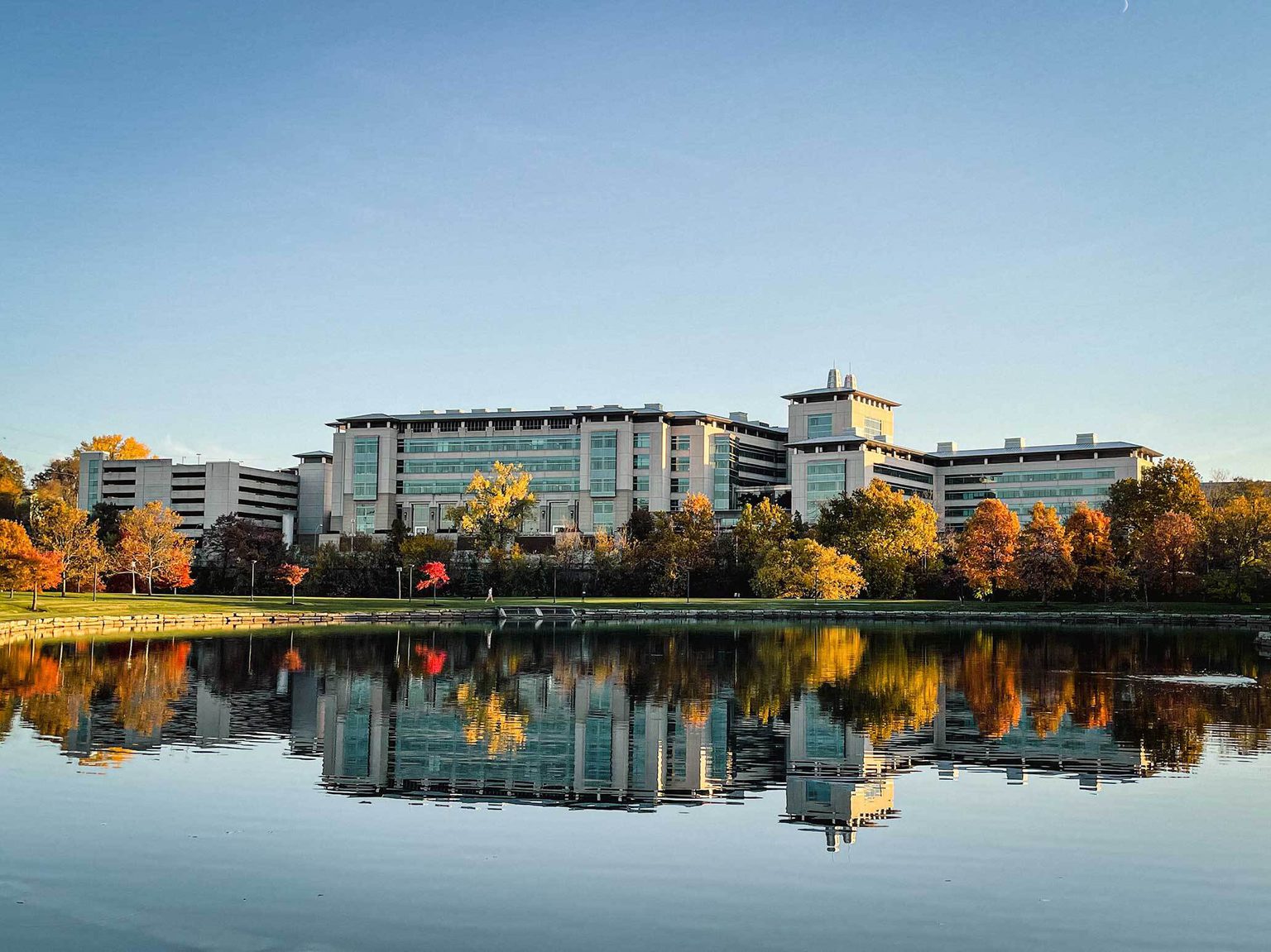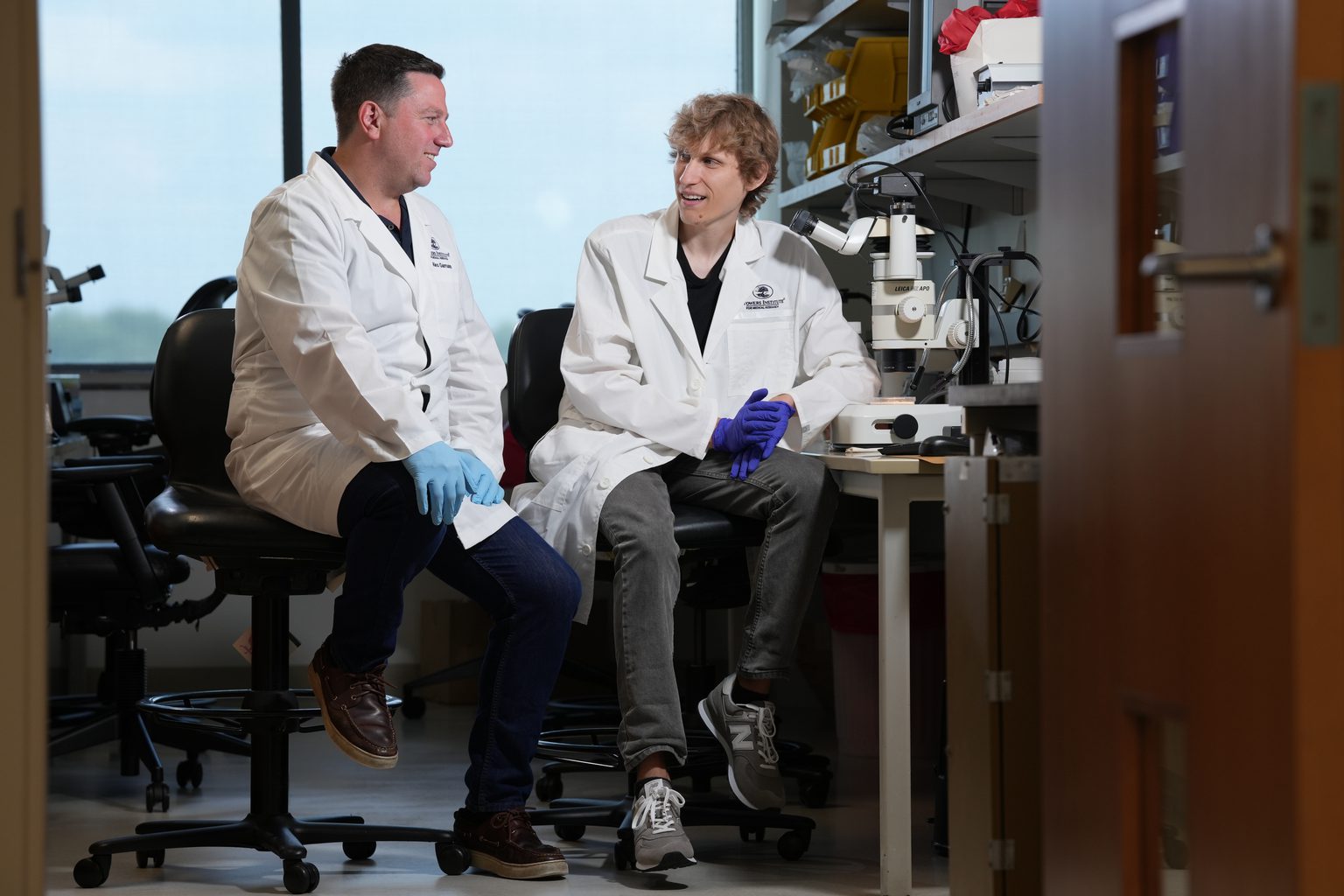News

17 December 2025
2025 in Review
Explore 15 highlights from 2025 at the Stowers Institute: New scientists, impactful discoveries, and a milestone moment.
Read Article
News
Alex Garruss, Ph.D., and Nelson Hall, Ph.D., join the Institute with a unifying motivation to explore foundational biology, from RNA to flatworms.

Alex Garruss, Ph.D., (left) and Nelson Hall, Ph.D., (right) join the Institute as the inaugural Jim and Virginia Stowers Fellows
By Rachel Scanza, Ph.D.
The Stowers Institute recently launched the Jim and Virginia Stowers Fellows Program, a five-year term for early-career researchers to advance scientific knowledge by pursuing novel and bold ideas. Alex Garruss, Ph.D., a Harvard alumnus, former Stowers bioinformatician, and scientific leader in biotechnology, and Nelson Hall, Ph.D., a scientist recruited from Stanford University, have creative ideas for tackling biological questions from basic molecules to some of nature’s strangest creatures.
Garruss, an inventor, a biotechnology researcher, and a scientist, seeks to incorporate authenticity, altruism, and adventure toward the pursuit of knowledge surrounding RNA sequence, structure, and how it relates to function via cutting-edge computational approaches.
Hall is an inventor in his own right, seeking to develop globally applicable genetic tools that can be deployed in understanding the biology of understudied, or even entirely new research organisms.
Both Fellows have distinct yet unifying motivations: Biological research, be it RNA or flatworms, can benefit from innovative ideas and modern technology.
“In essence, this is not, ‘What is my burning question?’ but rather, 'How do we fundamentally update our science?’” said Garruss, who is primarily focused on pioneering method development and application. “We want to shift the paradigm from human hypotheses to making artificial intelligence sort through massive experimental RNA data at a scale where the capacity for new discoveries is greatly enhanced.”
Alex Garruss, Ph.D., discusses his research
“I’m aiming to get the genetic tools in the flatworm, Macrostomum lignano, and other related flatworms to a level where more labs can adopt these research organisms,” said Hall, who wants both to develop tools for genetically altering flatworms and to expand those tools for gene editing of any new research organism. “Rather than saying, ‘Here’s a new worm that can do some really exceptional things, and good luck figuring out how to work with it’, I want to say, ‘Here’s a cool worm, and here is an entire toolbox to investigate its biology.’”
Garruss plans on leveraging his knowledge and skills toward developing cutting-edge methodology for adapting artificial intelligence (AI) methods to approach central concepts governing RNA—a type of molecule integral for life for which many basic properties remain largely mysterious—from a fundamentally different angle.
“Currently, we don’t know fundamental principles governing RNA stability and function,” said Garruss. “How can we design experiments that will ask nature to tell us the performance of each molecule, and how can we combine such experiments with AI to uncover nature’s secrets surrounding RNA?”
Garruss intends to better understand basic biological processes by combining machine learning, a subset of AI, with an experimental setup called massive multiplexing—combining many, varied molecules of interest into a single experiment—allowing millions to even billions of parallel experiments simultaneously.
Nelson Hall, Ph.D., discusses his research
Hall hopes to accomplish two main goals during his time as a Fellow. His first goal is to streamline the genetic tools for manipulating M. lignano while his second goal is broader. Hall wants to expand and optimize gene editing tools that can be more universally applied to a wide variety of unstudied organisms.
“If I find an unusual animal that has some interesting features or capabilities, having a toolbox available could allow me to address what made me interested in that organism to begin with,” said Hall. “This could potentially enable more portable lab technology in the field.”
After having worked in both biotech and academia, Garruss is convinced about staying in nonprofit and likens academic pursuit as an adventure and the support from other scientists to a guild. “The Stowers community has an innate drive for curiosity—it’s a community of people willing to get you there, to bring out the best in you, and to help each other find our own authentic contribution,” said Garruss.
Hall is open-minded regarding his future. “I like what I do. I am having fun doing it. To the extent that I can keep having fun doing science, I’m open to continue via whatever mechanisms will let me.”
News

17 December 2025
Explore 15 highlights from 2025 at the Stowers Institute: New scientists, impactful discoveries, and a milestone moment.
Read Article
News
08 December 2025
Craig Venter, Ph.D., founder of the J. Craig Venter Institute, joined Alejandro Sánchez Alvarado, Ph.D., for an evening of reflection and conversation surrounding his scientific journey.
Read Article
